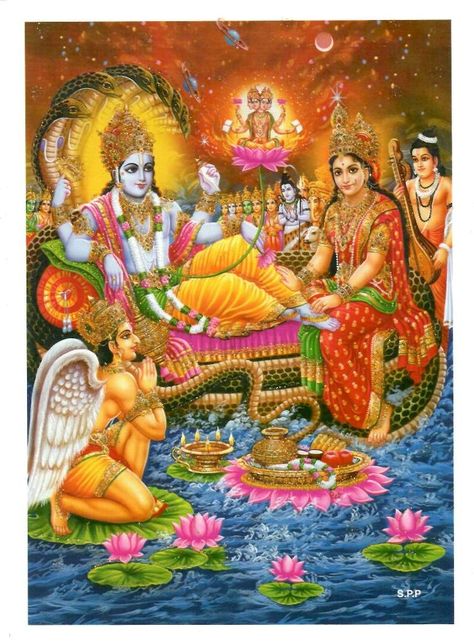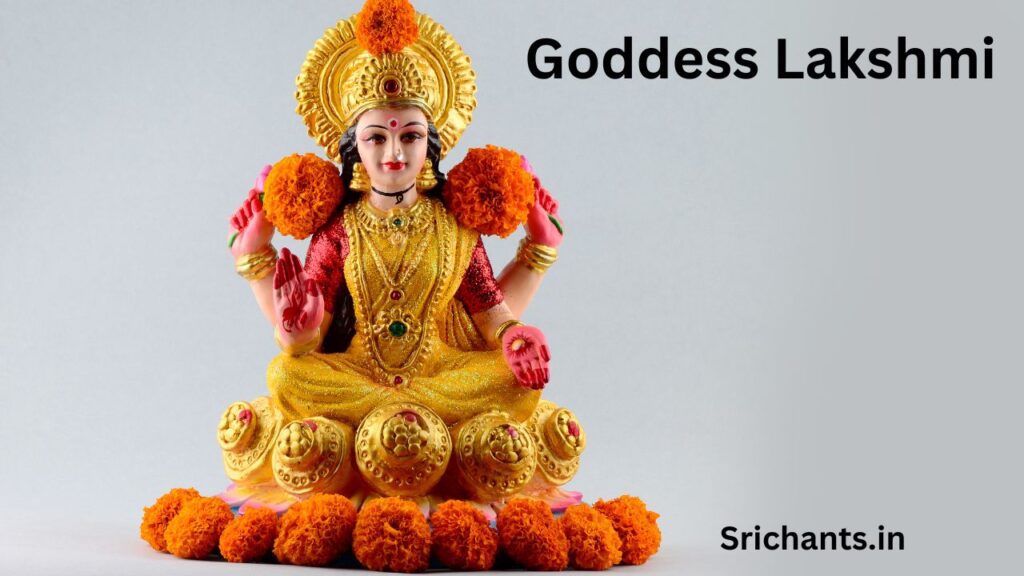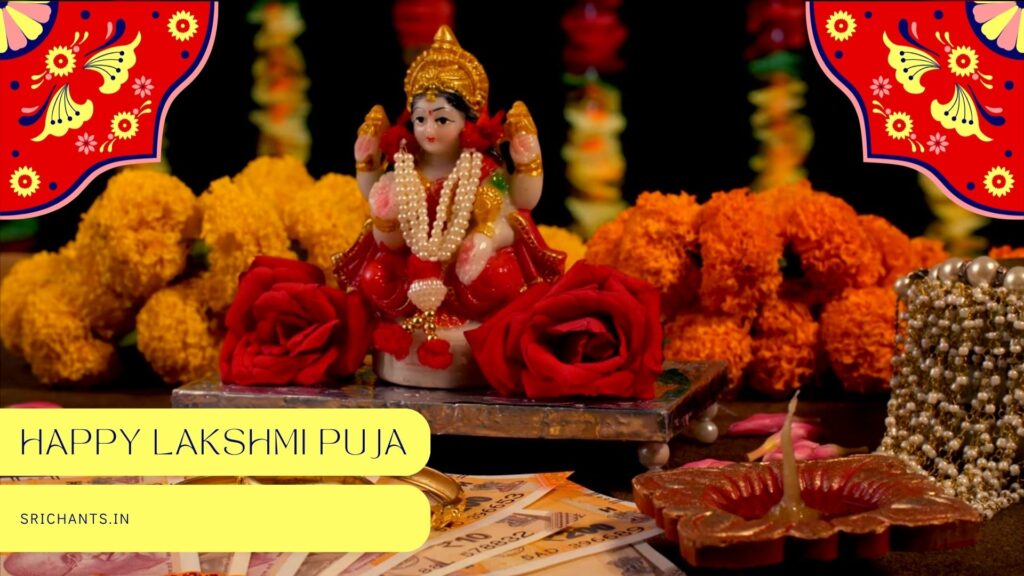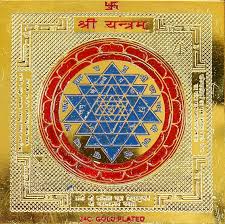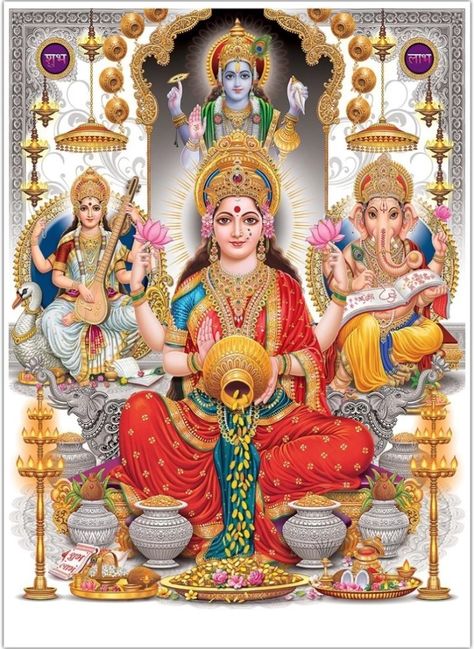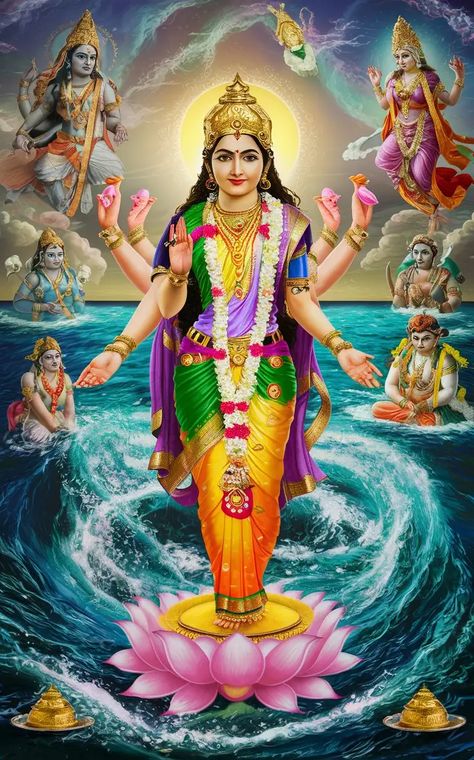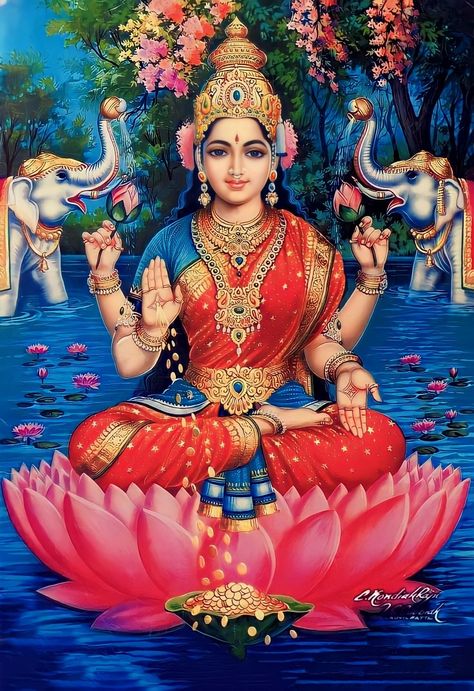How To Please Goddess Lakshmi | Mother lakshmi prayer
Introduction
Lakshmi, the Hindu goddess of wealth, prosperity, and fortune, has been held in high regard as a prominent figure in the Hindu pantheon for centuries. Not only is her significance derived from her status as the consort of Lord Vishnu, the preserver of the universe, but also from the profound symbolism and teachings she exemplifies. Lakshmi’s iconography is replete with significance, from the lotus flower, which symbolizes her divine purity and transcendence, to the elephants that surround her, which represent power and hard work.
In the Hindu tradition, the cultural and spiritual fabric of the people is profoundly influenced by the worship of Lakshmi. In order to invoke the blessings of this benevolent deity, devotees in India, and particularly in the state of Goa, participate in a diverse array of rituals and practices. These devotional activities encompass a wide variety of events, including daily puja (worship) in the home and grand celebrations during auspicious festivals such as Diwali, the Festival of Lights.

The Importance of Lakshmi in Hindu Mythology
Lakshmi’s origins in Hindu mythology can be traced back to the churning of the cosmic ocean, an event that resulted in the emergence of a variety of treasures, including the elixir of immortality – amrita. According to legend, Lakshmi emerged from the ocean’s depths, perched on a lotus, and clutching an additional blossom in her hand. This captivating image has become a central motif in Hindu art and iconography, as it represents the goddess’s divine beauty, purity, and abundance.
The lotus flower’s association with Lakshmi is of particular importance, as it is revered in Hinduism for its capacity to emerge from the murky waters of the material world, unaffected by the mud, and flourish into a symbol of spiritual enlightenment. This metaphor is frequently employed to illustrate Lakshmi’s role in assisting devotees in transcending material prosperity and achieving spiritual advancement.
Shri Lakshmi’s Temples
There are numerous temples in India, particularly in the state of Goa, that are exclusively dedicated to the worship of Goddess Lakshmi. These temples, which are referred to as Shri Mahalakshmi Mandirs, are sacred spaces where devotees can visit to offer their prayers and seek the blessings of the deity.
The Shri Mahalakshmi temple in Bandiwade is one of the most renowned Lakshmi sanctuaries in Goa. The Goan people’s unwavering devotion to Lakshmi is exemplified by this ancient temple. The Shri Gajant Lakshmi temple in Volvoi, Ponda, is another noteworthy temple that is also highly regarded by the local community.
The Mahalakshmi temple, which was constructed with the Portuguese regime’s approval during their control in Goa, is the first temple dedicated to the goddess to be located in the capital city of Panaji. The establishment of this temple is indicative of the profound cultural significance of Lakshmi worship in the area.
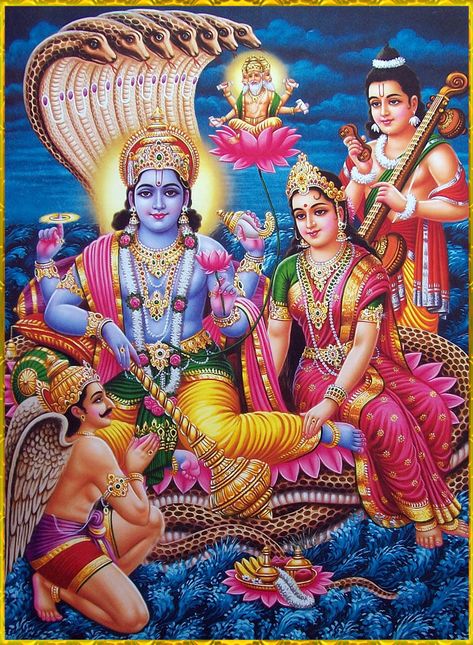
The Daily Rituals of Lakshmi Worship
In the temples that are dedicated to Goddess Lakshmi, the temple ministers, who are referred to as bhatts, conduct a series of daily rituals and ceremonies in order to pay homage to the deity. These include the abhishek, the primary ritual of bathing the goddess’s idol, and the aarti, a sacred ceremony that involves the recitation of petitions and mantras and the waving of lighted lamps.
The aarti is frequently accompanied by the chanting of bhajans (devotional songs) and kirtans (religious discourses) by the devotees on auspicious days, which further enhances the spiritual atmosphere and invokes the goddess’s presence.
The Importance of Fridays in Lakshmi Worship
Shukrawar, or Fridays, are particularly auspicious in the Hindu tradition for the worship of Goddess Lakshmi. Many Hindu devotees, particularly those who own businesses or work in commercial establishments, make it a point to visit Lakshmi temples on Fridays in order to seek her graces.
Additionally, the Lakshmi Devi Puja ritual, which is conducted on Friday evenings, has been integrated into a multitude of businesses and agencies in Goa. A gesture that has its origins in the past and continues to be a cherished tradition is the distribution of a prasad (offering) of roasted or boiled chana (chickpeas) to the employees and visitors following the puja.
The Grand Celebration of Lakshmi Puja during Diwali
The Festival of Lights, or Diwali, is the most significant and grandiose commemoration of Lakshmi worship. The first day of the financial year for businesses and establishments is regarded as the evening of Diwali or the following evening, depending on the Hindu calendar, according to Hindu beliefs.
Hindus throughout India, including in Goa, conduct a complex Lakshmi Puja on this auspicious occasion in order to obtain the goddess’s graces for prosperity and success in the upcoming year. The puja is frequently administered by a bhatt, a temple priest, and is followed by the distribution of special offerings, including lozenges and chirmuleo (puffed rice), to the attendees..
In the event that Lakshmi Puja is conducted in a residence, adjacent married women (savashins) are invited as special guests. In a show of respect and gratitude, the host savashin applies haldi-kumkum (turmeric and vermilion) to their foreheads and presents them with a fistful of roasted chana and chirmuleo.
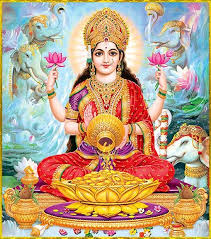
The Celebration of Shravan Shukrawar Vrata
The Shravan Shukrawar Vrata, a unique vrata (vow), has been a longstanding practice in the Hindu tradition, particularly among the upper-caste and upper-class Hindu households in Goa. Married women (savashins) observe this vrata on every Friday (Shukrawar) during the sacred month of Shravan.
This vrata is observed through the practice of fasting and the performance of a pooja in honor of Goddess Lakshmi. In a show of respect and reverence, the host savashin invites five other savashins to her residence in the evening, applies haldi-kumkum to their foreheads, and provides them with a cup of masala dudh (spiced milk) and a handful of roasted or boiled chana.
The Economic Development of the Goan Population and the Practice of Lakshmi Worship
The Goan population has experienced a remarkable transformation in its economic and social landscape over the past few decades. In the past, the primary occupation of many Goan families was agriculture. However, the post-1980s era witnessed a substantial increase in the availability of employment opportunities in a variety of industries, businesses, and offices, as well as increased educational qualifications.
The character of the Grihalakshmi, the lady of the house who is responsible for the financial well-being of the family, has been closely associated with this newfound economic prosperity. As these women began to contribute to the family’s income, they experienced a profound sense of gratitude toward Goddess Lakshmi, whom they believed had bestowed prosperity and abundance upon their families.
Observance of Shri Vaibhav Lakshmi Vrata
The Shri Vaibhav Lakshmi Vrata is one of the most prominent vrats (vows) observed by many Goan Hindus. This vrata was initially observed by Hindu women from the neighboring state of Karnataka and was subsequently introduced to the Goan Hindu community, particularly among the privileged classes, approximately forty years ago.
The Shri Vaibhav Lakshmi Vrata entails the woman herself performing a puja to Goddess Lakshmi and fasting, in lieu of a bhatt (temple minister) conducting the rituals. A coconut adorned with a gold ornament is worshipped during the puja, which is believed to symbolize Lakshmi and her connection to fortune.
The vrata is observed for eleven consecutive Fridays, and upon the completion of a cycle, the devotee may elect to commence another cycle, committing to seek a boon or favor from the deity.
Observance of Shri Lakshmi Vrata during Margashirsha
The Shri Lakshmi Vrata is another significant vrata that Goan Hindu women observe. It is performed during the auspicious month of Margashirsha, which corresponds to November-December or December-January in the Gregorian calendar.
On all Thursdays (Guruwar) of the Margashirsha month, that can occasionally number five, this vrata is observed by both unmarried females (kumarikas) and married women (savashins). The devotee adheres to the instructions enumerated in the Shri Lakshmi Mahatmya, a religious booklet that delineates the vrata’s rituals and significance, by fasting for the entire day and performing a puja to Goddess Lakshmi.
Grihalakshmi, the host, invites seven savashins or kumarikas as special guests, performs the puja, and offers them sweets, chana, and a copy of the Shri Lakshmi Mahatmya as a gesture of respect and gratitude during the Udyapan, the culmination of the Shri Lakshmi Vrata, which takes place on the last Thursday of the month.
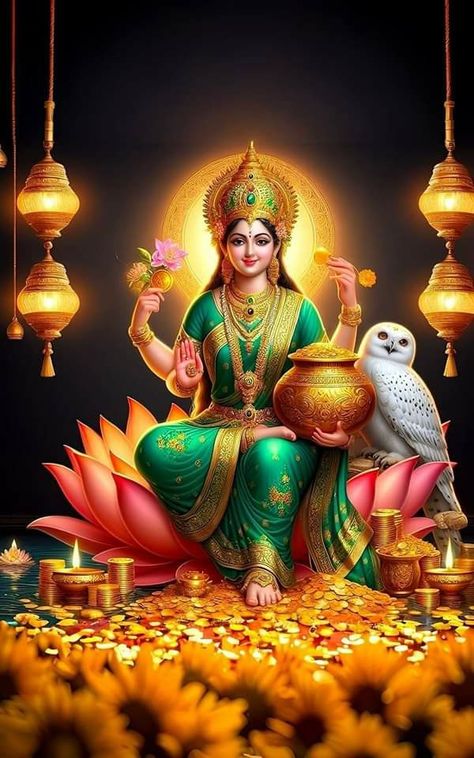
Shri Lakshmi Mahatmya’s Dissemination
The distribution of the Shri Lakshmi Mahatmya, a booklet that contains the narrative (katha) and instructions for the Shri Lakshmi Vrata, is a critical component of the Hindu community’s efforts to promote Lakshmi worship, particularly in Goa.
These publications not only furnish devotees with the essential information required to perform the vrata, but they also preserve and disseminate the rich tradition and teachings that are associated with the worship of Goddess Lakshmi. Shri Lakshmi Katha, which is a component of the Mahatmya, emphasizes the significance of devotion, humility, and the acknowledgment of the divine’s role in one’s spiritual and material well-being. It also imparts moral teachings.
conclusion
The devotional practices that encircle the worship of Goddess Lakshmi in Goa and throughout India are a testament to the profound cultural and spiritual significance of this revered deity. From the daily rituals performed in Lakshmi temples to the grand celebrations during Diwali and the observance of special vrats such as the Shravan Shukrawar Vrata and the Shri Lakshmi Vrata, the devotees of Lakshmi engage in a rich tapestry of traditions that reflect their reverence for the goddess of wealth and prosperity.
The Grihalakshmi, the mistress of the house, has become increasingly essential in ensuring the financial well-being of the family as the Goan population has experienced a remarkable economic transformation in recent decades. This has further fortified the devotees’ bond with Goddess Lakshmi, as they continue to seek her graces and guidance in their pursuit of spiritual and material advancement.
The Shri Lakshmi Mahatmya, which has been disseminated with its detailed instructions and captivating narrative of the deity, has been instrumental in the preservation and dissemination of the devotional practices associated with Lakshmi worship. The Hindu community in Goa and beyond continues to preserve the timeless teachings and traditions that have established Lakshmi as a revered and adored figure in the pantheon of Hindu deities through these practices.
#howto #goddess #lakshmi #prayer #pray

